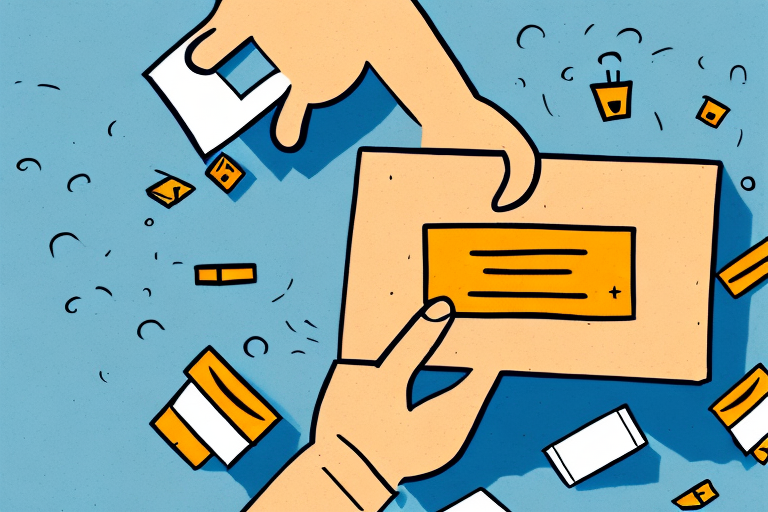Understanding Amazon’s Return Policy
Returning items to Amazon is a straightforward process for most shoppers, but it's essential to understand the specifics to avoid issues. According to Amazon’s return policy, you have 30 days from the date of delivery to return most items for a refund or replacement. However, certain products may have different return windows or may not be eligible for return at all, such as digital content, personalized items, or perishable goods.
Additionally, some categories like electronics and large appliances might incur a restocking fee ranging from 10% to 20% of the item's price. It's crucial to review the specific return policy for each product before initiating a return to ensure compliance and avoid unexpected deductions from your refund.
Common Mistakes When Returning Items
Returning the Wrong Item
The most frequent error customers make is sending back the wrong item. This can happen due to mislabeling, confusion between similar products, or simply packing the incorrect item by mistake. To prevent this, always double-check the item and its details against your order confirmation before packaging.
Incomplete Returns
Another common mistake is not including all the original components or accessories that came with the item. Missing parts can lead to delays in processing your return or even rejection of the return request. Ensure that you include everything that was originally packaged with the product.
Ignoring Specific Return Policies
Different products have varied return requirements. For instance, electronics need to be unopened and in their original packaging, while clothing items may have different conditions. Ignoring these specific policies can complicate the return process.
Steps to Resolve Returning the Wrong Item
Verify the Returned Item
If you realize you've returned the wrong item, the first step is to verify the mistake. Cross-reference the returned item with your order details and the item you intended to return.
Contact Amazon Customer Service
Reach out to Amazon’s customer service immediately. Provide them with your order number, details of the item you intended to return, and the item you mistakenly sent back. Amazon’s customer support is available 24/7 and can guide you through the necessary steps to rectify the issue.
Provide Necessary Documentation
Be prepared to supply any required documentation, such as photos of the returned item, to expedite the resolution process. Clear evidence of the mistake can help Amazon address your case more efficiently.
Consequences of Returning Incorrect Items
Processing Delays
Returning the wrong item can lead to significant delays in processing your return or refund. Amazon needs to identify and process the incorrect item separately, which consumes additional time and resources.
Account Restrictions
Repeated mistakes in returns can flag your account for suspicious activity. Amazon may impose restrictions or even suspend your account if they detect a pattern of incorrect returns.
Financial Implications
Incorrect returns might result in additional fees or deductions from your refund, especially if a restocking fee applies to the returned item.
Preventive Measures to Avoid Future Errors
Double-Check Order Details
Always review your order details before initiating a return. Ensure that the item you intend to return matches the product listed in your order history.
Use Clear Packaging
Label your return packages clearly with the correct sender and recipient information. Consider using original packaging to minimize confusion.
Keep Records
Maintain records of your orders and returns, including confirmation emails and tracking numbers. This documentation can be invaluable if discrepancies arise.
Alternatives to Returning Items
Exchange the Item
If the wrong item is received or returned, consider exchanging it for the correct one. Amazon offers an exchange policy that might be more convenient than a return.
Sell or Gift the Item
If returning the item is not feasible, you can sell it on the Amazon Marketplace, give it as a gift, or donate it to a charity.
Partial Refunds
In some cases, requesting a partial refund instead of a full return might be a viable option. This approach can save time and resources while still addressing the issue.
Legal and Account Implications
Legal Consequences of Fraudulent Returns
Intentionally returning the wrong item constitutes fraudulent behavior and can lead to legal actions, including fines or imprisonment. Ethical conduct is paramount to maintain trust and credibility.
Impact on Amazon Account
Frequent and incorrect returns can lead to Amazon restricting your account or limiting your purchasing capabilities. Maintaining a good return history is essential to avoid such repercussions.
Resources for Resolving Disputes with Sellers
Amazon A-to-Z Guarantee
The Amazon A-to-Z Guarantee protects customers in case of disputes with sellers. If you encounter unresolved issues, you can file a claim under this guarantee for assistance.
Amazon Marketplace Support
For disputes related to Marketplace sellers, contacting the Amazon Marketplace support can provide tailored solutions and mediation.
Preventing Scams and Fraudulent Returns on Amazon
Verify Seller Credibility
Before making a purchase, review the seller’s ratings and feedback. Purchasing from reputable sellers minimizes the risk of encountering scams.
Secure Payment Methods
Use secure payment methods provided by Amazon to protect your financial information and reduce the risk of fraud.
Monitor Your Orders
Regularly check your order status and return activities. Promptly address any suspicious or unauthorized actions to safeguard your account.
In conclusion, returning the wrong item to Amazon can be an inconvenient experience, but by understanding Amazon’s return policies, avoiding common mistakes, and utilizing the available resources, you can effectively resolve such issues. Always take preventive measures to minimize errors and maintain a positive shopping experience on Amazon.




















